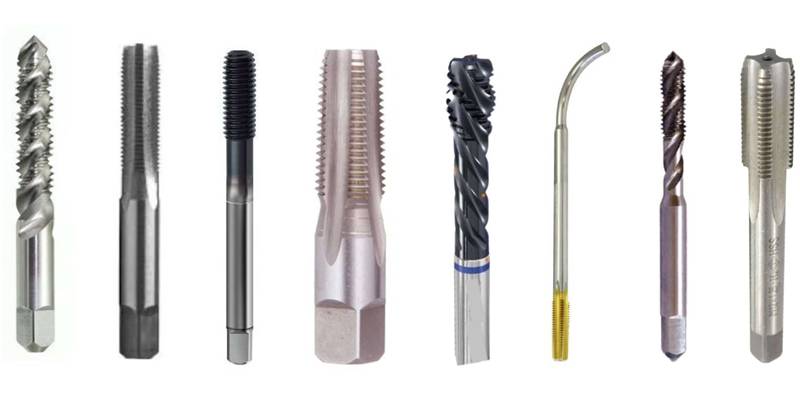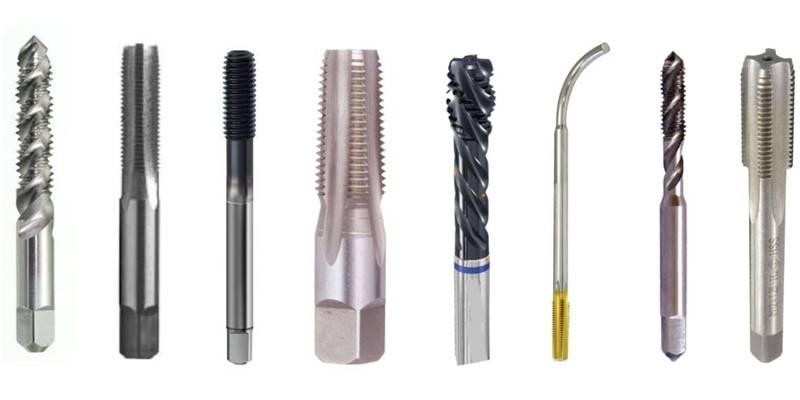
Threading is an important processing procedure that uses a tap to cut the threads of a pair of mating metal fasteners. There are many possible uses. For example, manufacturers in the automotive and medical industries use threaded holes to join parts together, as this makes the parts more compact and makes them easier to transport and use.
There are many different types of taps used by machinists and engineers, and choosing the right tap determines the outcome of a project. This article explains in detail what a tap is, how to use it for threading, and what to consider when choosing the right tap.
What is a faucet?
A tap is a specially designed tool that cuts and restores internal threads in holes in metal parts. Many faucets are manually operated with a lever, while others use automatic drills. The parts of the tap have characteristic shapes that distinguish them.
Taps are generally made of hardened chrome steel, solid carbide or high speed steel. The external threads of the fasteners are made with a cutting edge. The threaded hole and fastener serve as a mechanism for connecting parts when the use of traditional nuts and bolts is not possible.
Components of a faucet
Although different types of faucets have different features, the main components are as follows.
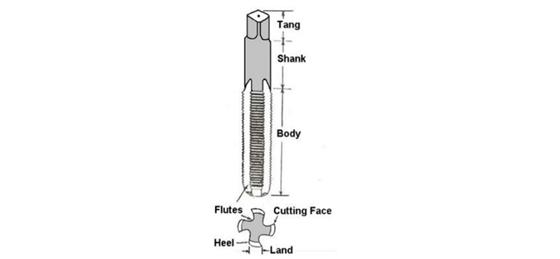
Body : This is the longest and most important part. The faucet body is what makes the cut. It contains the thread chamfers and complete threads. The number of these varies depending on the type of faucet.
shaft : The shaft is directly above the body. It is smooth and has a cylindrical shape. The length of the shaft varies depending on the type of male. This piece has markings that indicate the distance between the wires.
seaweed : This is the square part above the shaft. Depending on the mode of operation (manual or automatic), manufacturers fix the spigot on a support to rotate the tap.
Whistling : Flutes are grooves in taps that collect and remove chips during threading. Depending on the type of faucet, they come in different types and shapes. A standard faucet has 2 to 4 grooves, which can be square, straight or spiral.
country : The cutting edge is the threaded part between the grooves.
hoe : This is the sloped area behind the wires.
cutting surface : This is the surface of the threading tool that comes into contact with the material.
Types of faucets
Different types of taps can cut different types of threads in holes. Below are the different faucets with their different features
Manual touch
The roughing cutter, finishing cutter and basic cutter make up the complete set of manual taps.

-Conical touch
This tap has 8 to 10 thread chamfers before the total cutting diameter. Therefore, manufacturers use it as a starting tap for blind holes in hard materials. A tapered tap offers a finer, more gradual cutting motion. It is not ideal as the only faucet for a project because it cannot cut the threads all the way to the bottom.
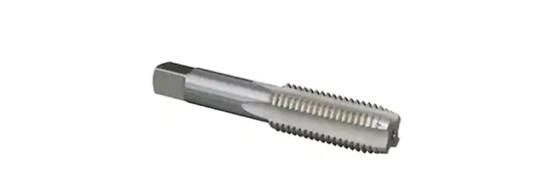
-plug the tap
Using a tap directly after tapping is not uncommon. Taps give already drilled holes the desired depth and shape. They have 3 to 5 strands that taper at the tip. Therefore, they have a stronger cutting effect than the pre-cutter.
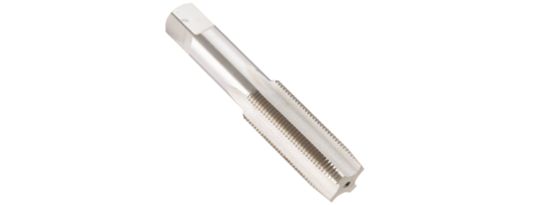
-Floor tap
Manufacturers use the finishing faucet as the final faucet in a project. This is because it has 1-2 thread chamfers and does not line up with the hole when used to start a thread cutting operation. The finishing cutter also cleans up lines that have already been cut during cutting.
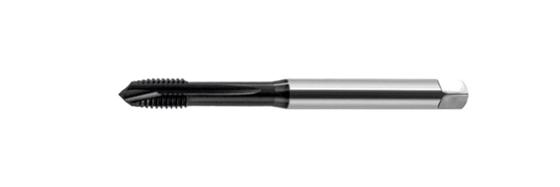
Master Cock
The master tap is like the tapper. The difference is in the number of slots. The master tap has 7 to 10 flutes with more cutting surfaces. Master taps are suitable for cutting clean threads in hard, resistant materials.
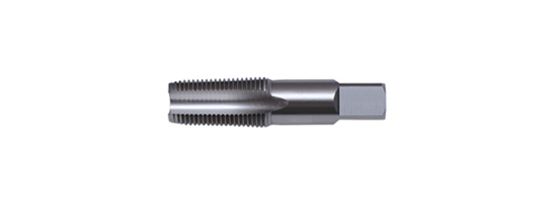
gas tap
The gas tap cuts deep gas threads to join hydraulic fittings and pipes. It has 1-2 thread chamfers that work perfectly in cylindrical and conical holes.
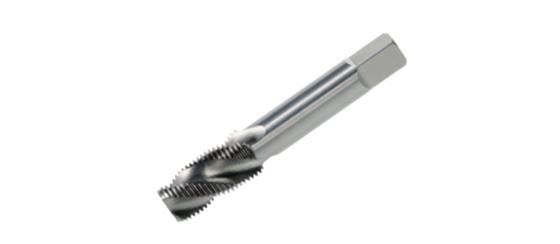
Machine tap
In contrast to the tap types described above, mechanical tapping is fully automatic. It uses a threading machine, reducing the occurrence of damage to the part and the male. Additionally, this machine simplifies the threading process as the process requires less human labor to complete a project.
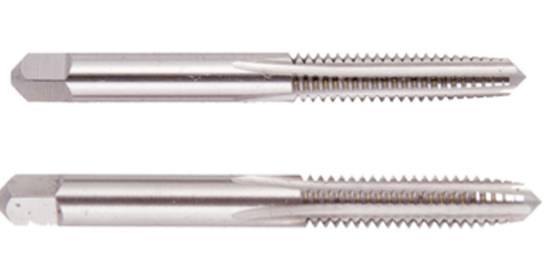
Machine tap
This type of faucet is not fully automatic. It is used with a hand tap or a faucet. Machine taps have 2 to 4 threads that taper from the tip. For this reason, they can manually drill deep holes in many types of materials. Manufacturers use mechanical taps for repairs, routine maintenance, and re-threading where precision and tight tolerances are not essential.
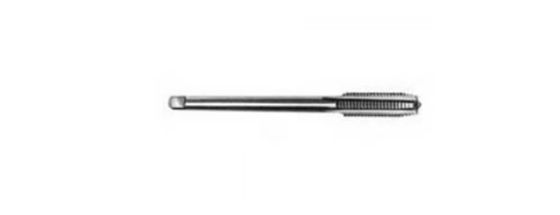
Extension faucet
This type of touch is like a manual touch. However, pull-out faucets have a long stem over the body. Therefore, they can reach holes considered inaccessible, such as a pulley hub.

Faucet with curved stem
Its distinctive feature is a curved handle that protrudes from the tang. This allows continuous cutting of the thread without the need to stop the drill halfway through.
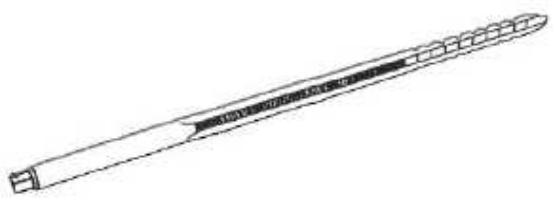
Stud Faucet
This tap is 15 to 20 inches long and is used on locomotives and grill equipment. The taps have holes that correspond to the diameter of the stud nut.

Spiral groove tap
Compared with traditional straight grooves, this faucet's groove is spiral in shape. This feature makes it easier to remove chips from the threaded hole. A spiral tap is perfect for soft metals and metals that produce short chips.

Touch without groove
As the name suggests, this type of tap has threads throughout the body without grooves. Fluteless taps use compression forming technology to cut threads in holes without the need for chip removal. This allows for faster cutting speeds and high quality threads. However, it is only compatible with soft metals.
How do you use a tap to cut thread?
Cutting threads in a hole is a careful, step-by-step process. Follow these steps to create high-quality threads.
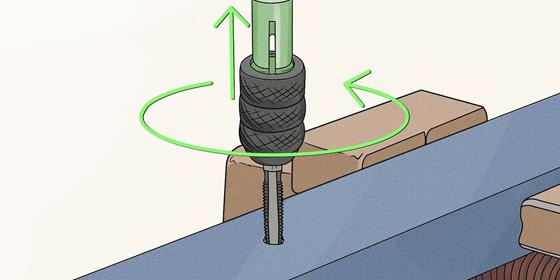
Fixing process
Before drilling and tapping, it is important to hold the part in place with a vise or other fastening tools. Because proper fixing makes the drilling process easier. Any movement, no matter how small, during drilling can result in defective final parts. To do this, proceed as follows:
- Clean the workpiece.
- Place the workpiece in the middle of the vise jaw. For larger pieces, attach it directly to the bench.
Note: It is important to control the clamping force to avoid any type of damage.
Drilling process
How to make the perfect hole:
- Use a pencil to draw a circular mark around the area to be drilled.
- Apply a lubricant to the drilling tool. Drill a cylindrical hole at constant speed and pressure using the most appropriate type of drill.
- Straighten the hole using a drill and motor.
The size of the hole is determined by the screw used. Ideally, the hole diameter should be smaller. This is because tapping enlarges the hole even more. However, there is a standard table (in the following section) that matches screw size to hole diameter.
Note: Be careful when drilling blind holes. The hole should be slightly deeper than the length of the screw.
Playing
Drilling holes is simple. To do this, proceed as follows:
- Depending on the type of faucet, connect the faucet to a faucet or faucet machine.
- Apply lubricant directly to the hole and tip of the faucet.
- Align the faucet with the hole until you feel resistance. By default, for every 360-degree clockwise rotation, perform a 180-degree counterclockwise rotation. This breaks up the chips and creates space for the tap's cutting teeth to continue cutting.
Considerations for Choosing the Right Type of Faucet
There are many types of faucets available on the market. Choosing the right tap for a project determines the outcome of the threading process. When choosing a faucet, consider the following.
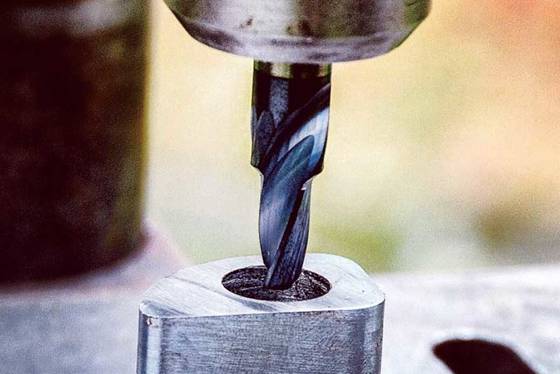
Workpiece type
Technical materials have different degrees of hardness. Therefore, the type of tap used by manufacturers varies depending on the hardness or softness of the material. Some faucets have special features that make them more suitable for certain materials. For example, fluteless taps are ideal for soft metals, while mechanical taps work better on harder materials because they are fully automatic.
Tap material
Generally, taps are made of high-speed steel or carbide steel. The material to be processed determines which core you choose. Manufacturers use high-speed steel taps for soft metals such as copper, lead, magnesium, aluminum and related alloys. High speed steel taps provide a more controlled and slow cutting action.
Carbide taps, on the other hand, are robust and cut threads faster in very hard materials such as cast iron, titanium, brass, stainless steel, nickel and other hard alloys. This is because they can withstand the friction and heat that occurs while cutting thread.
Type of holes
The depth of the drilled hole determines which tap will be used. Different types of taps have different numbers of thread chamfers. Thread chamfers serve as a support system to guide the tap when cutting threads. Only whole strands create the cutting effect. With this in mind, taps with 1-3 thread chamfers produce deeper holes. This is particularly important for blind holes.
cutting speed
Some types of taps are specifically designed for use in high-speed production. If speed is a critical factor, spiral point faucets, keyless faucets or self-operating faucets may be ideal. In spiral flute taps, the spiral or helical flute moves chips away from the threading direction. This reduces the time required to remove chip build-up. This advantage applies to grooveless taps that do not produce chips.
Find your faucet size using a table
Different types of faucets come in different sizes. The size of the hole determines the size of the faucet. If the size of the drilling tool is larger than the tap, the final tapped holes will be larger than the fastener. On the other hand, a smaller drill diameter creates holes that are too small for the threading tool. This may damage the tap and the workpiece.
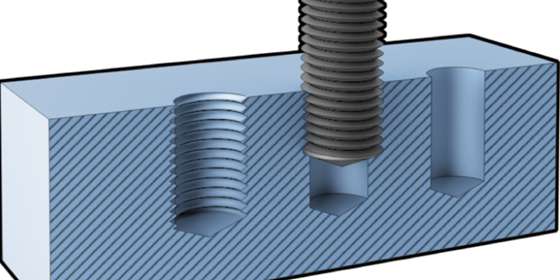
To avoid this, you can enlarge the hole as needed using the drill machining process. The standard formula for calculating drill size is:
Drill Size = 7/8 (Tap Size) – 1/32
The table for determining faucet size
| Ring size | Outer diameter (mm) | mm per wire | Drill size (mm) |
| M1.6×0.35 | 1.6mm | 0.35 | 1.25mm |
| M2 × 0.4 | 2mm | 0.4 | 1.6mm |
| M2.5×0.45 | 2.5mm | 0.45 | 2.05mm |
| M3×0.5 | 3mm | 0.5 | 2.5mm |
| M3.5×0.6 | 3.5mm | 0.6 | 2.9mm |
| M4×0.7 | 4mm | 0.7 | 3.3mm |
| M5×0.8 | 5mm | 0.8 | 4.2mm |
| M6×1 | 6mm | 1 | 5mm |
| M8×1.25 | 8mm | 1.25 | 6.8mm |
| M8×1 | 8mm | 1 | 7mm |
| M10×1.5 | 10mm | 1.5 | 8.5mm |
| M10×1.25 | 10mm | 1.25 | 8.8mm |
| M12×1.75 | 12mm | 1.75 | 10.2mm |
| M12×1.25 | 12mm | 1.25 | 10.8mm |
| M14×2 | 14mm | two | 12mm |
| M14×1.5 | 14mm | 1.5 | 12.5mm |
| M16×2 | 16mm | two | 14mm |
| M16×1.5 | 16mm | 1.5 | 14.5mm |
| M18×2.5 | 18mm | 2.5 | 15.5mm |
| M18×1.5 | 18mm | 1.5 | 16.5mm |
| M20×2.5 | 20mm | 2.5 | 17.5mm |
| M20×1.5 | 20mm | 1.5 | 18.5mm |
| M22×2.5 | 22mm | 2.5 | 19.5mm |
| M22×1.5 | 22mm | 1.5 | 20.5mm |
| M24×3 | 24mm | 3 | 21mm |
| M24×2 | 24mm | two | 22mm |
| M27×3 | 27mm | 3 | 24mm |
| M27×2 | 27mm | two | 25mm |
Concluding
A tap cuts precise internal threads into holes in parts to install fasteners where traditional screws and nuts are not ideal. Manufacturers use different types of taps to tap holes. You can use many thread cutting techniques to cut threads and create custom parts.
Common questions
Can you drill holes with a cutting edge?
The internal threads in a drilled hole and the external threads of a bolt or nut form a pair of mating metal fasteners. The cutting tool cuts external threads on a bolt or nut. Both line types must fit together exactly.
Why should you lubricate a faucet before tapping?
It is important to apply lubricant directly to the hole and tap tip before drilling a hole. This makes chip removal easier and helps reduce friction.
Can faucets rethread an existing hole?
Yes, a tap can cut threads into an existing hole. Engineers and machinists in many construction industries keep a set of taps in their toolbox for cleaning and re-drilling as needed.

